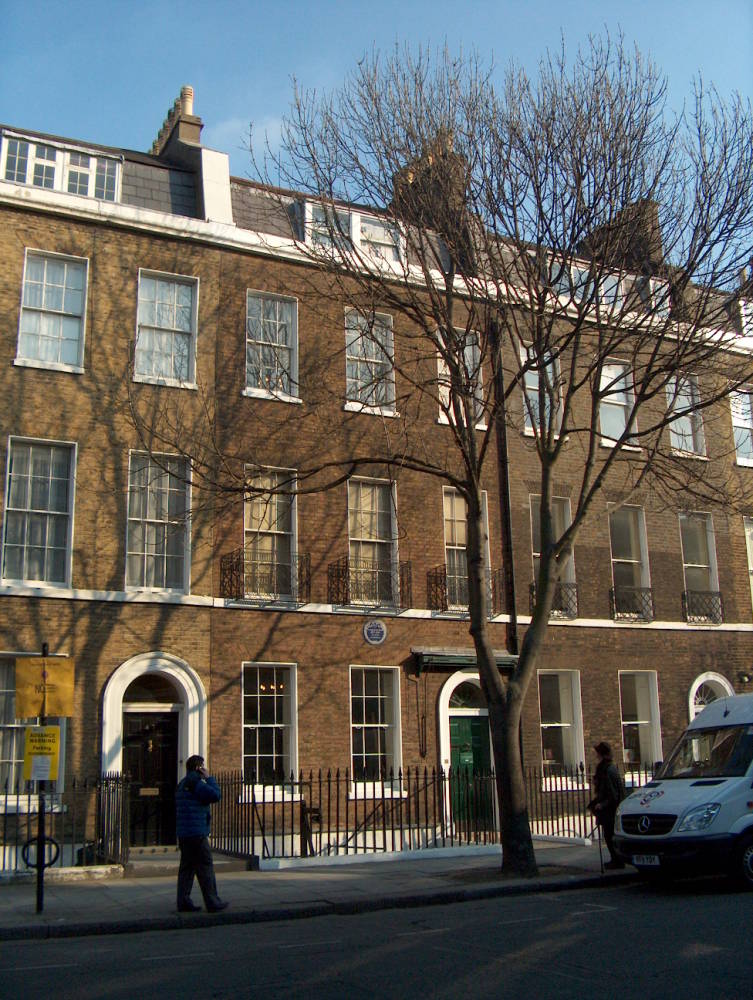[Click on these images to enlarge them.] Photographs (2012), image scan (2007), and text by the author. Formatting and perspective correction by George P. Landow. You may use the images without prior permission for any scholarly or educational purpose as long as you (1) credit the photographer and (2) link your document to this URL in a web document or cite the Victorian Web in a print one.]


In 1834, his star as a shorthand reporter and author of the "sketches" rising, Charles Dickens began "looking about him" for a separate residence, but did not acquire a lease on a real house for nearly three years, as Forster notes below.
Two days after the publication of the first monthly number of "Pickwick" he married Catherine Hogarth, and the following year made his first real home at No. 48 Doughty Street, [a solidly middle-class home] . . . with a gate at either end and a lodge with a porter in a gold-laced hat and . . . mulberry-coloured coat . . . ." The porter's job was to keep all intruders from entering this exclusive territory.
The rooms at No. 15 Furnival's Inn into which he and Catherine, accompanied by his brother Fred and her sister Mary, moved after their marriage on 2 April 1836 were taken on a three-year lease, but when these became too small and too unbecoming his rising status, Dickens took a three-year lease on 48 Doughty Street at a cost of �80 per annum. The house, the largest in which the young author had yet lived, comprised five floors, including a garret and a full basement. Here Dickens's beloved sister-in-law, seventeen-year-old Mary Hogarth, died; here his first child was born in December, 1837; and here Dickens wrote The Pickwick Papers, Oliver Twist, and Nicholas Nickleby. No. 48 mercifully survived the German Blitz of London, and still is known as "The Dickens House," serving as both a museum and the London headquarters of the Dickens Fellowship. From here in December 1839, after a residence in the quiet, private street lasting almost three years, Dickens moved his growing family to No. 1 Devonshire Terrace, Regent's Park.


A recent photograph and mid-twentieth-century drawing. This illustration from the June 1947 St. Pancras Journal appears in an article entitled "The Immortal of Doughty Street," the second in a series entitled "Renown and Our Neighbour: A series of Articles Concerning Famous Folk in the Story of St. Pancras," by Frederick Sinclair, Borough Librarian and Editor of the journal. Since the St. Pancras Journal adds "Included by kind permission of J. M. Dent & Sons," this image obviously comes from a volume published by Dent.
References
Sinclair, Frederick. "The Immortal of Doughty Street." St. Pancras Journal (June 1947), 19-20.
Last modified 15 February 2012